This is the first one in a series of articles on the mechanics of damage in Caliber. In this article, we will talk about damage and armor penetration in the torso and limbs.
Each weapon in the game has its base damage, which is listed as «damage» in the weapon’s characteristics. However, you may find that in combat, the damage inflicted by the weapon differs from that specified in the operator’s profile. The reason for this is the different conditions under which it is applied.
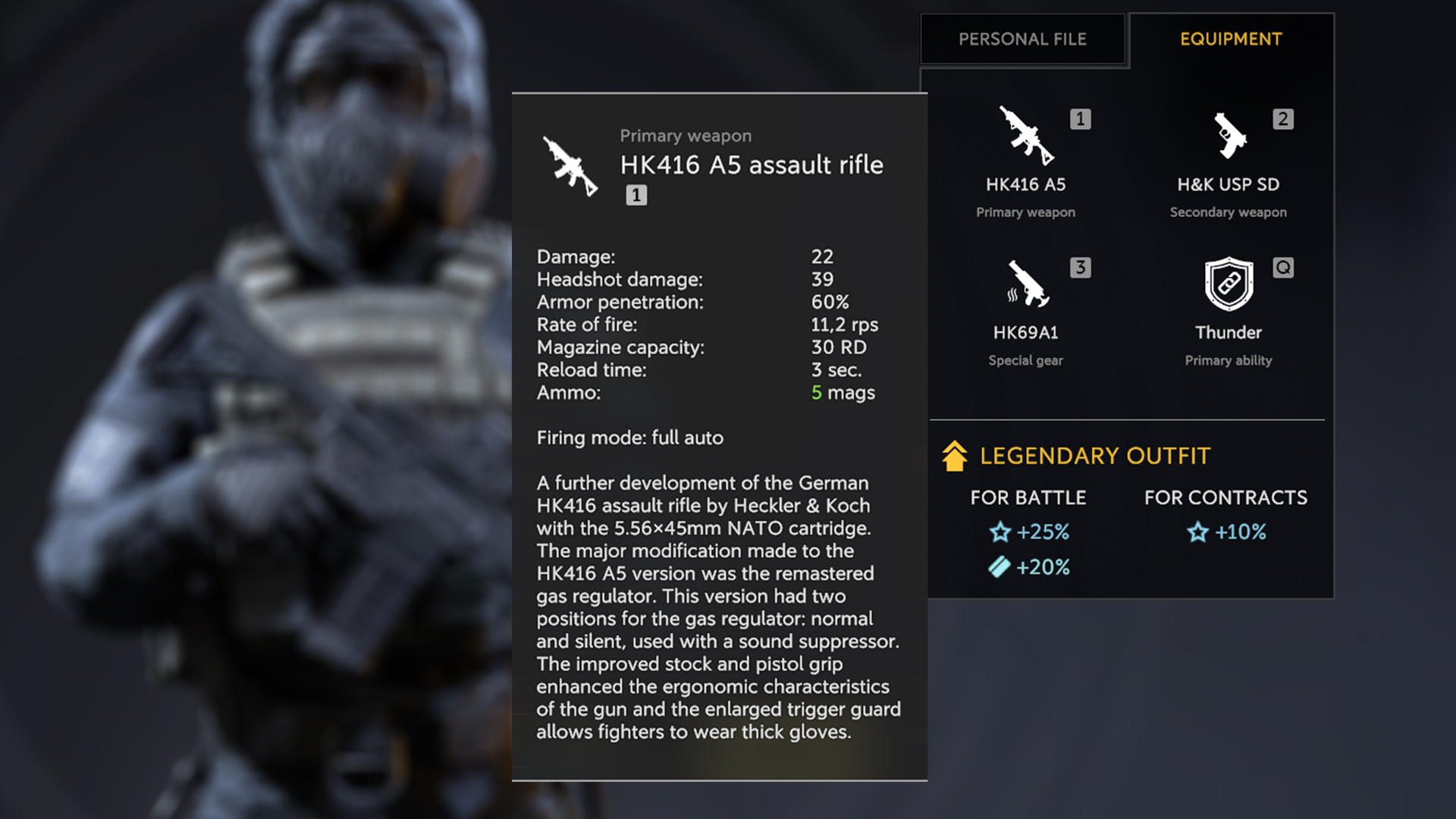
Damage is the number of hit points that one hit removes.
Armor penetration is the percentage of damage dealt on the target if they have armor.
For this article, it’s enough to remember this: weapons have base damage, headshot damage, armor penetration, and a damage modifier when hitting a limb.
The limb damage modifier for all operators is 80% of base damage. Limb damage is recorded provided that the limb does not cover the torso. Most often, 80% of the base damage is registered if the operator is shot in the legs or the forearms when being attacked from the flank.
Other modifiers are headshot damage, damage at long range, and ability modifiers. We will describe their features in the following materials, while in this article, we talk about damage dealt by a weapon fired at an effective distance.
The RAID collection support, medic, and sniper have a special trait that reduces damage to limbs by 20%. When they are hit in a limb, they will receive 60% of the fired weapon’s damage.
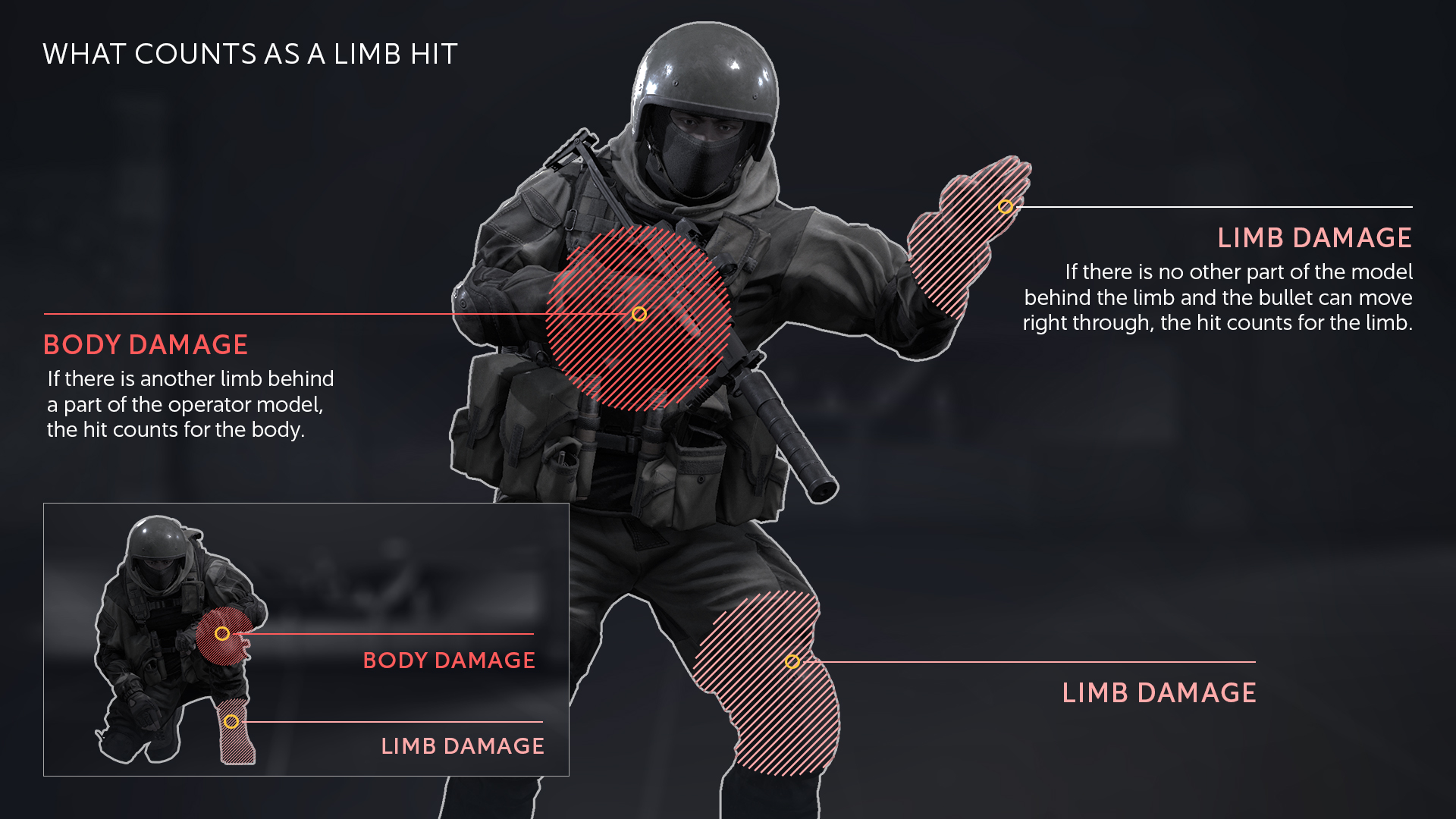
To show the damage types, let’s take Koszmar and shoot Ded, who has no armor.
Damage to Ded from Koszmar’s main weapon is 22 hit points; headshot damage is 39 points. That equals the declared base damage and headshot damage of Koszmar’s main weapon, the HK416A5. And when Ded receives a bullet in the leg, Koszmar deals damage equal to 80% of base damage — 17.6 hit points.
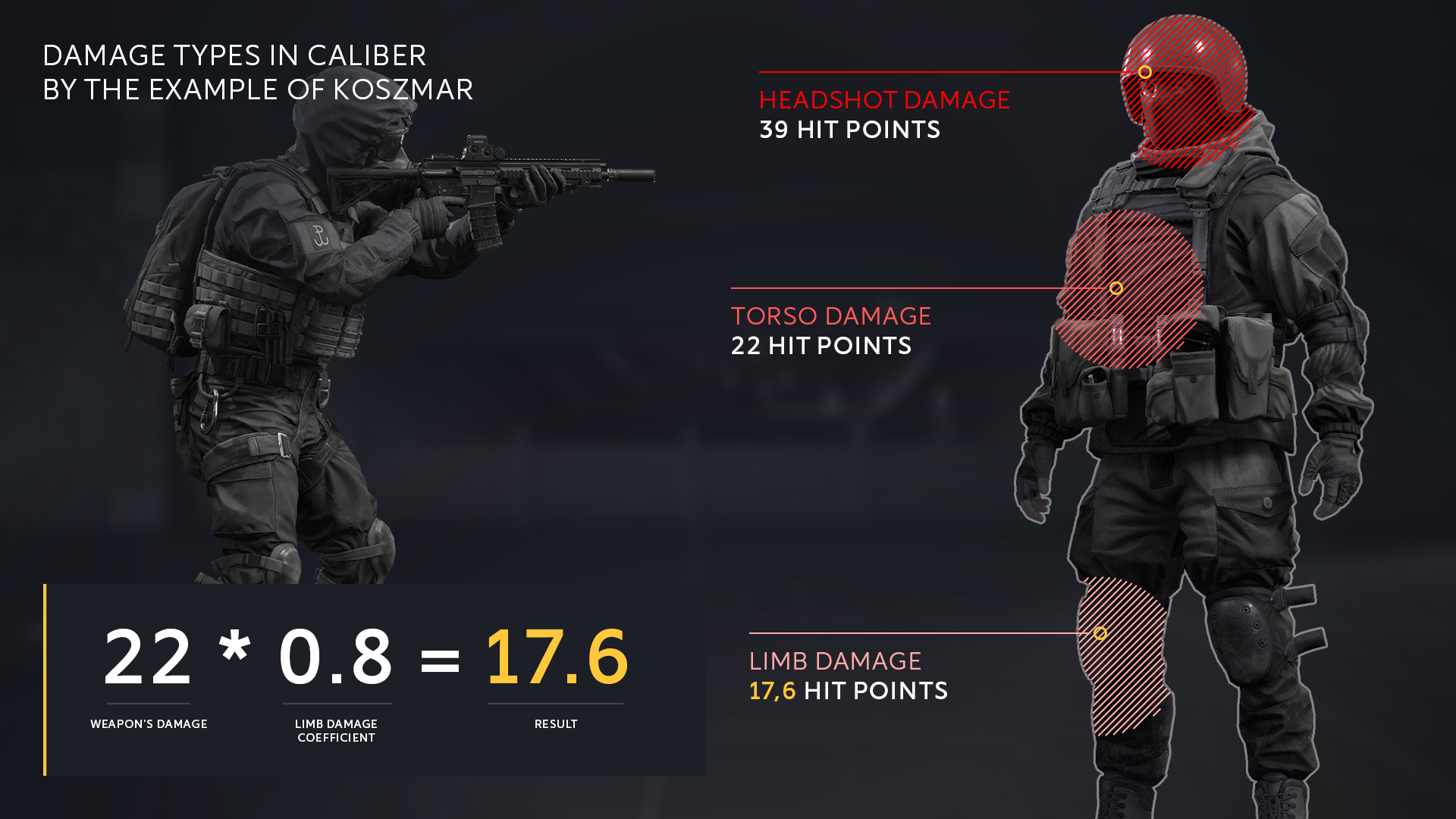
If the operator has armor, the damage is calculated using two formulas: one calculates how many hit points are removed by the shot, and the second one how much armor the same shot removes. Let’s call these formulas "health damage" and "armor damage".
health damage = weapon damage * weapon armor penetration
armor damage = weapon damage — health damage
Once again, Koszmar fires a shot in Ded, but this time hits his torso. This time, Ded is ready — he has maximum armor, 40 points.
Damage of Koszmar’s weapon = 22 points.
Armor penetration = 60%, which is equal to a coefficient of 0.6.
It turns out that: health damage from Koszmar’s main weapon = [22 * 0.6 = 13.2]. This is the number by which the target’s health will decrease if Koszmar hits the torso.
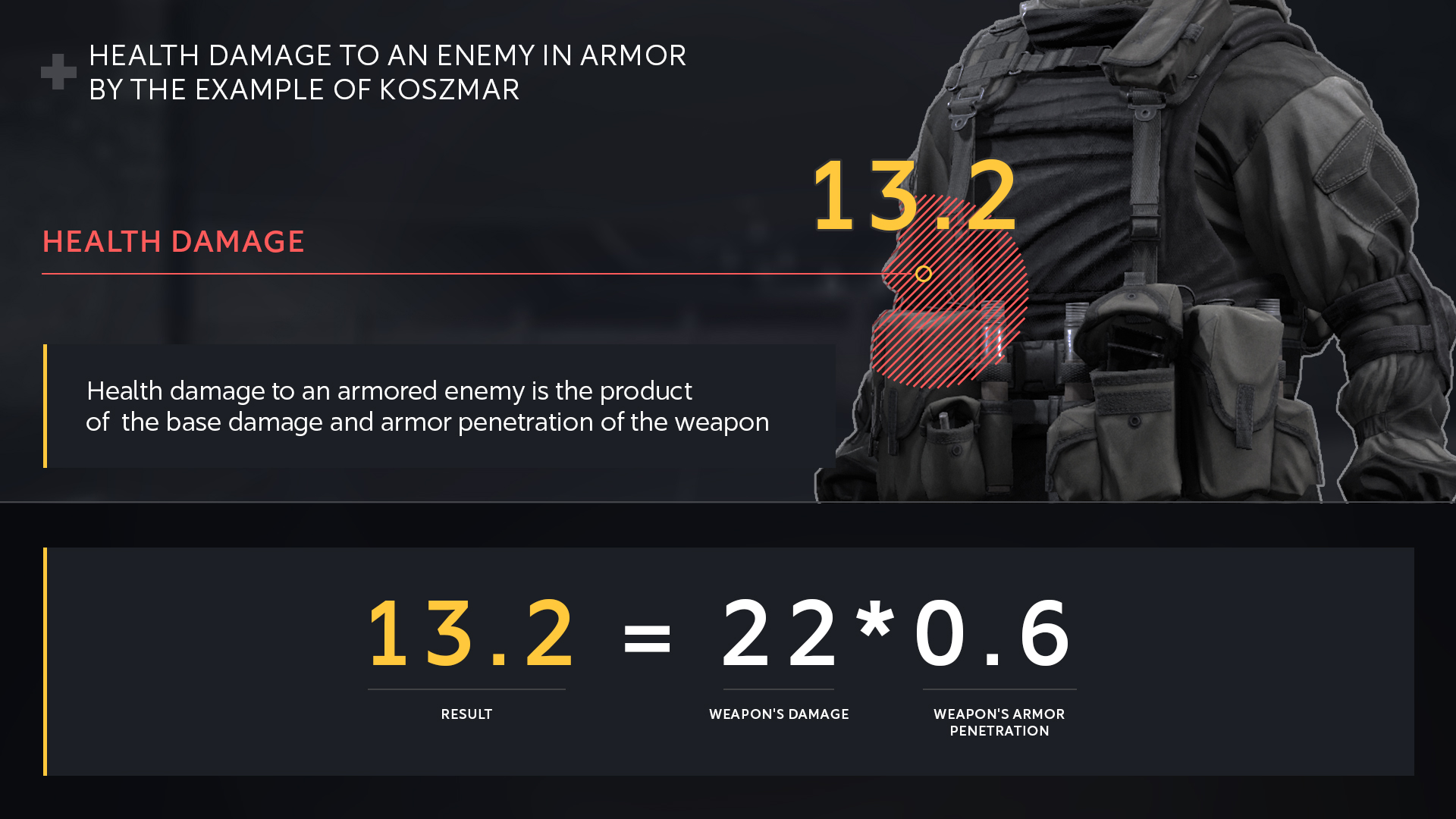
Armor damage from Koszmar’s main weapon = [22 - 13.2 = 9]. This number will be deducted from the target’s armor if Koszmar hits the torso.
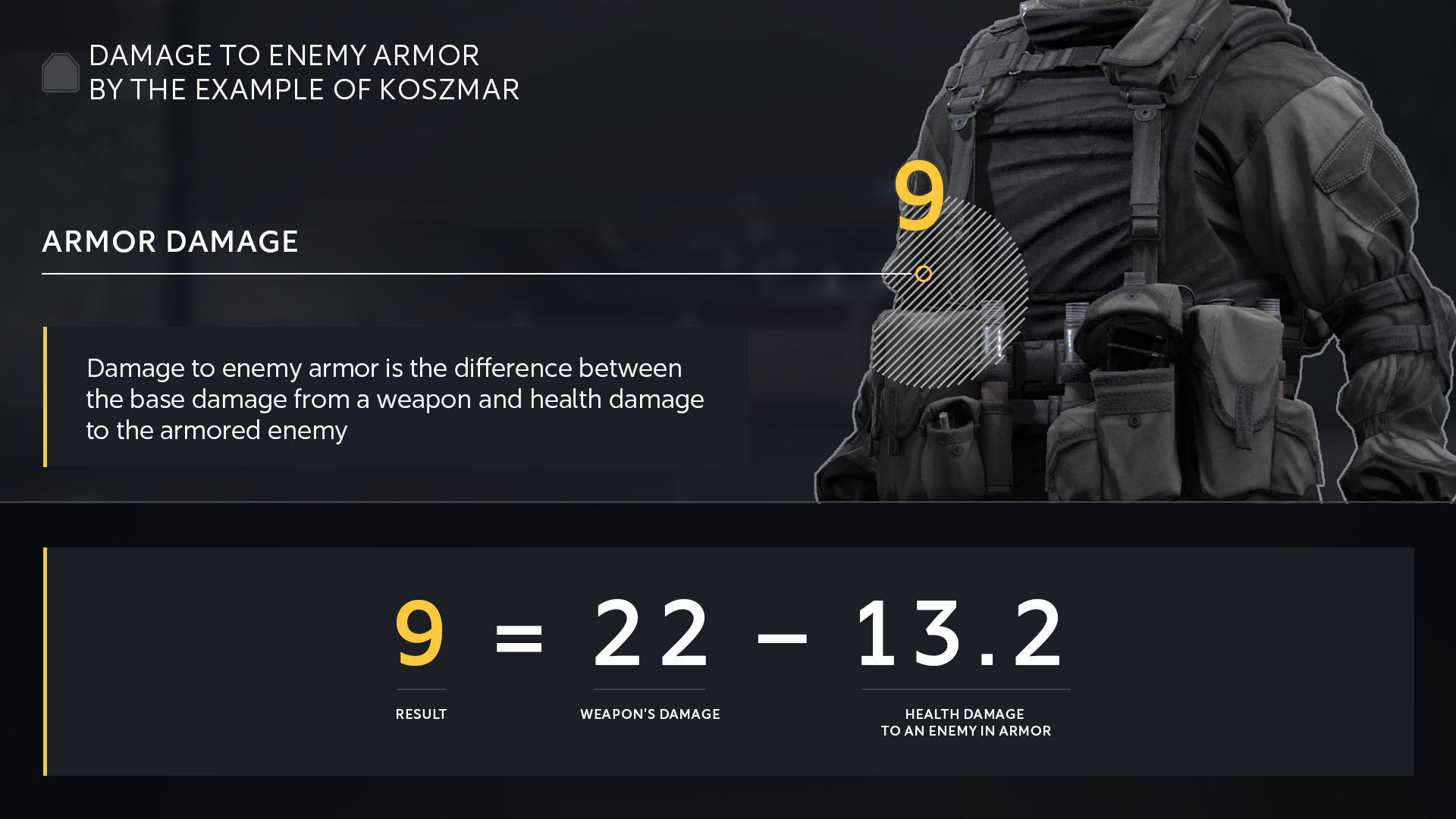
Under the hood, the game counts damage with an accuracy of six decimal places but with a few peculiarities. So, «health damage» is counted in fractional numbers. For example, Koszmar inflicts 13.2 damage to the torso of the operator with armor. A player with the damage display turned on will see that they have dealt 13 damage. However, in total, for five shots, it turns out that Koszmar deals 66 damage, not 65. And the game will count exactly 66 damage points.
Unlike health damage, armor damage in Caliber is rounded to the nearest whole number. Thus, Koszmar deals not 8.8 armor damage, as follows from the calculations, but 9 damage according to the rules in force in Caliber.
This logic makes it possible to calculate the damage to an armored operator when firing at limbs.
health damage when firing at the limbs of an armored operator = (weapon damage * 0.8) * weapon armor penetration
That is, Koszmar, shooting Ded at the legs, will inflict 10.56 health damage: [(22 * 0.8) * 0.6 = 10.56].
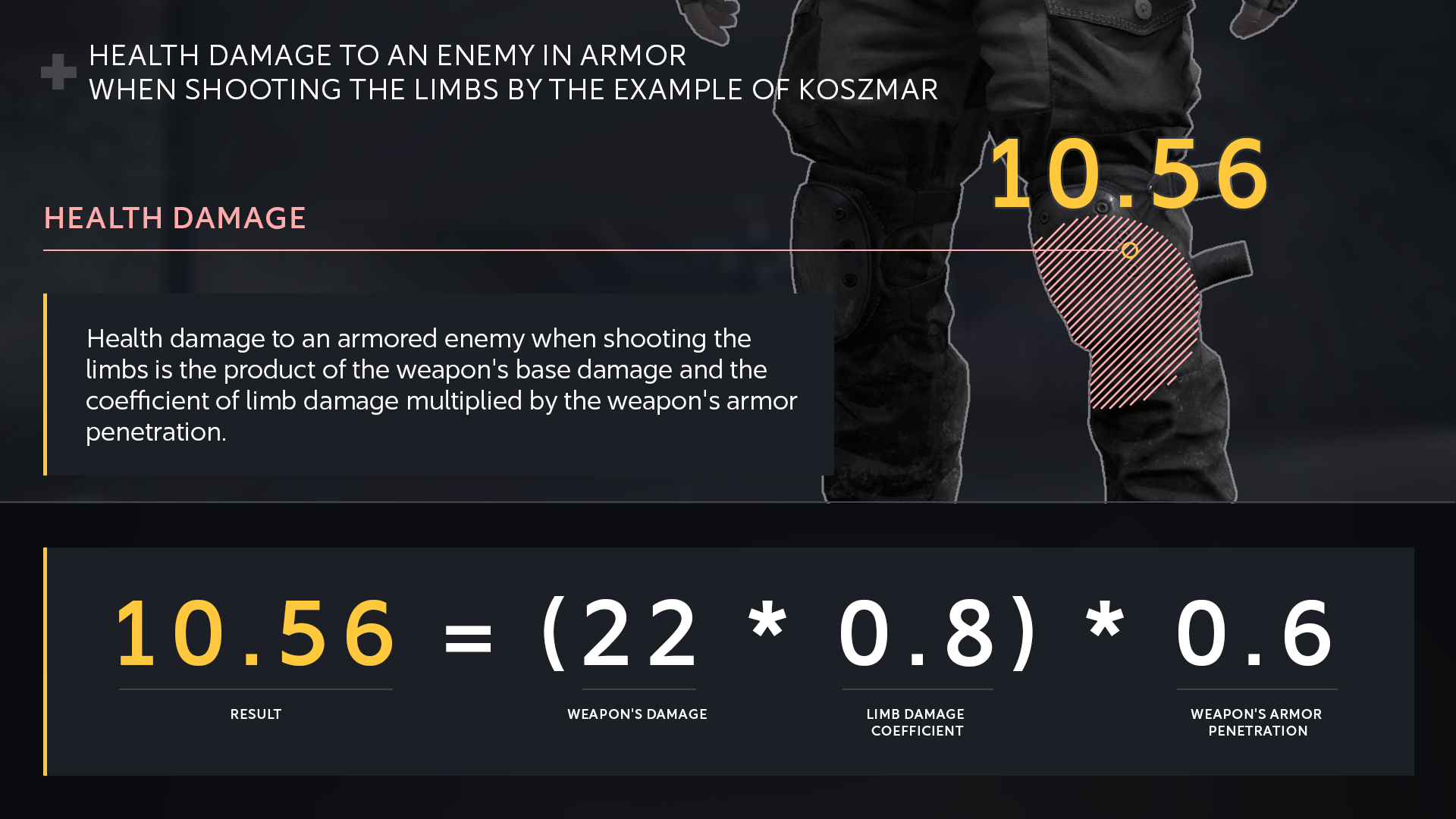
armor damage when shooting at limbs = (weapon damage * 0.8) — health damage when shooting at limbs of an armored operator
That is, Koszmar, shooting Ded at the legs, will inflict 7 damage points to armor: (22 * 0.8) — 10.56 = 7.44. In this case, the game will count the fractional number as the nearest integer, and the armor damage will be 7 points.
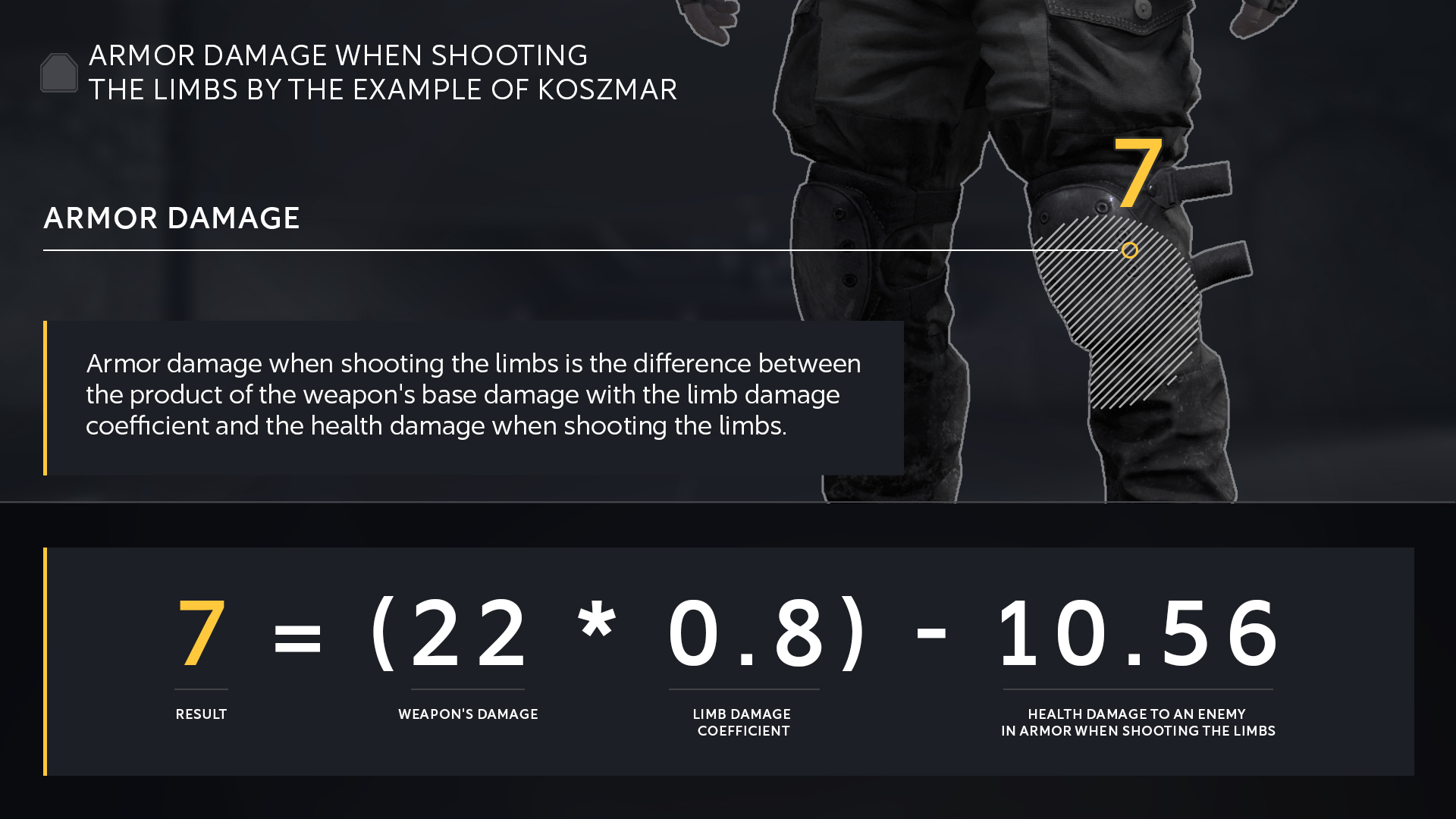
After reaching account level 20, all operators can increase their armor penetration by another 10%, except snipers. This is done by the Armor-Piercing Rounds skill, with which Koszmar will have 70% armor penetration. This will make him an even more formidable opponent.

Finally, let’s clearly illustrate that hit points and armor points in Caliber are independent values that receive damage in parallel.
Consider Archer, who will shoot Ded with full armor for the last time in this article.
The base damage of Archer’s main weapon, the M95 sniper rifle, is 115.
Archer’s armor penetration is 80%, which is equal to a coefficient of 0.8.
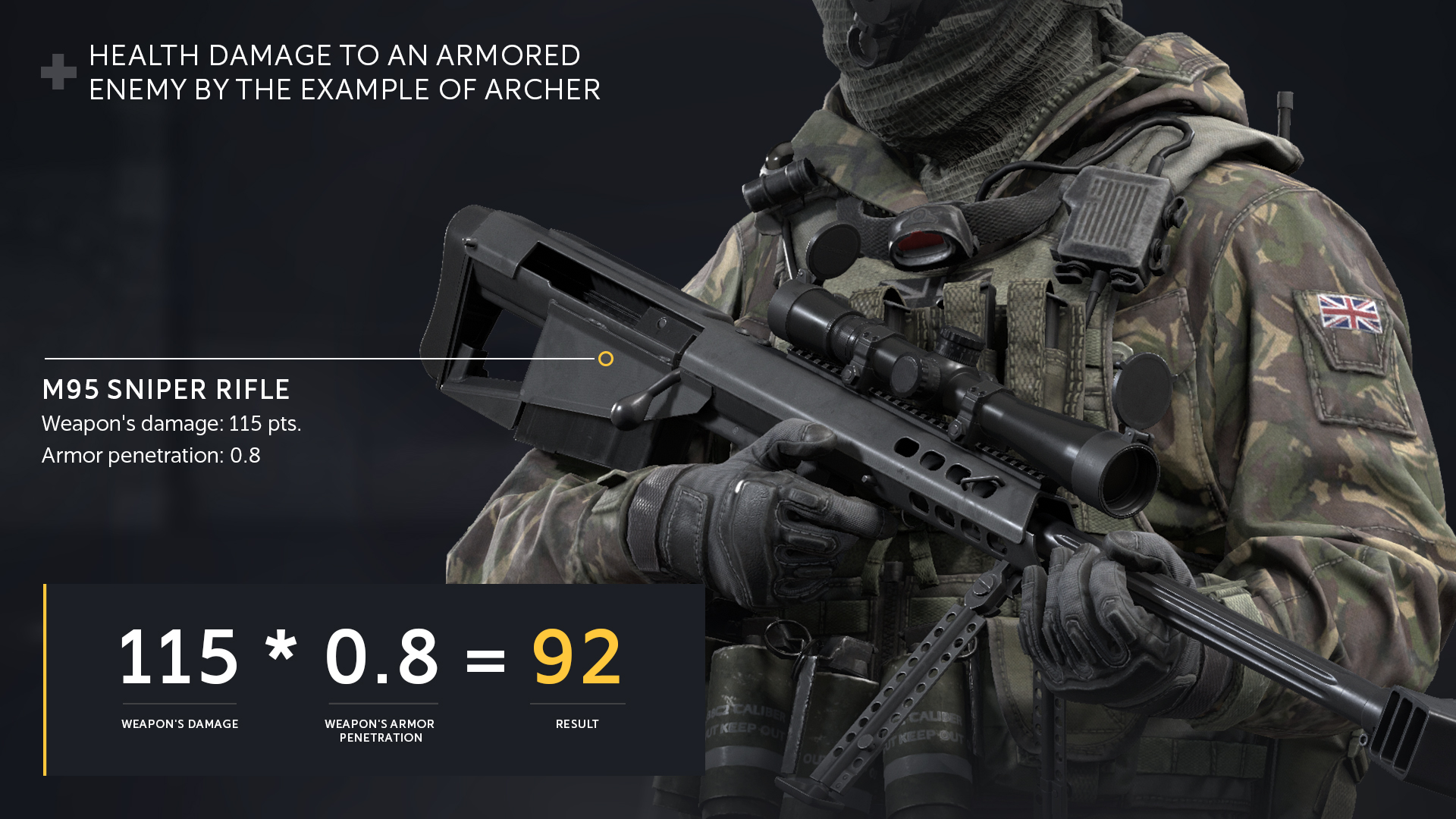
And Ded, until he reaches the operator level 15, has only 90 hit points.
It turns out that: health damage of Archer’s main weapon = 115 * 0.8 = 92. This is how many hit points Archer’s shot will take when hitting an operator.
Thus, Archer incapacitates the armored Ded with one shot to the torso. And so it will be with every operator whose torso encounters Archer’s bullet with less than 92 hit points.
This is all you need to know for a basic understanding of the damage mechanics in Caliber. The following article will cover the mechanics of damage dealing at a distance.
See you in battle!